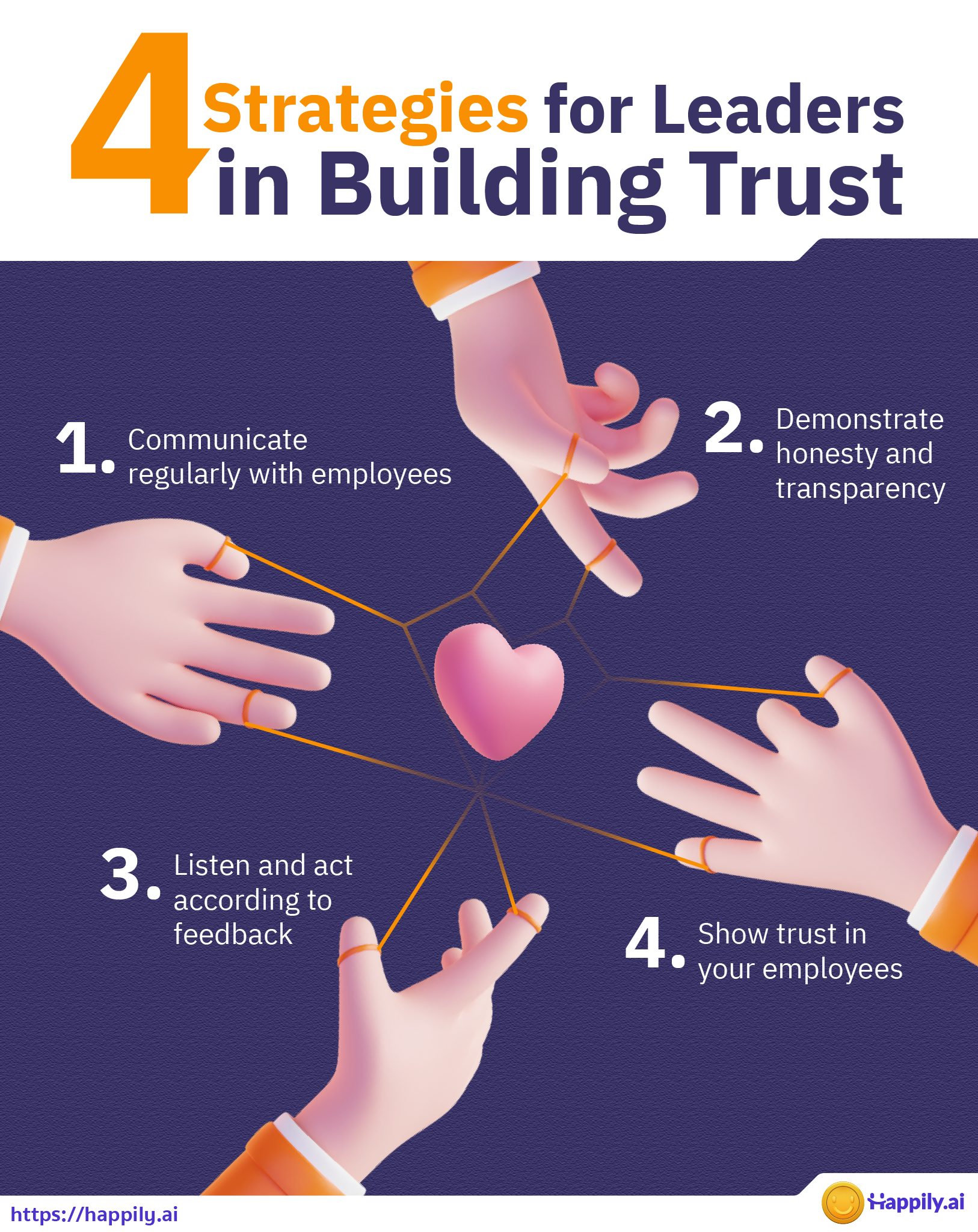Organizational Trust
The pandemic has sparked tremendous changes in how we work. Organizations and its employees need to adapt to new circumstances that arise in the midst of this change and uncertainty. Consequently, most employees have lower trust in the company's strategies.
Organizational trust is the confidence that employees have in the actions of the organization. Much of this comes from their trust in their leaders, managers, and team members. Trust in the organization is also related to other organizational factors such as the leader's vision and the company's mission, culture, and values. Its is the basis of unity and positive relationships among employees. A lack of trust can lead to reduced performance and increased rates of employee turnover.
Building organizational trust is essential. Employees who trust the organization tend to be more cooperative, creating higher work efficiency. A 2002 study by Galford and Drapeau found that organizations with a culture that encourages trust produce more quality products and services. These companies can recruit and retain highly motivated employees who exhibit positive organizational citizenship behavior.

4 Strategies for Leaders in Building Trust
Building organizational trust centers on the employees’ relationships with their manager and coworkers. Here are four ways that leaders can build trust:
1. Communicate regularly with employees
There is no way you can build trust without communication. A team that knows their goals,understands their purpose, and has strong relationships are more likely to collaborate. Leaders need to communicate regularly with their employees through daily check-ins, chat messages, or even by stopping at an employee's desk to discuss work or non-work-related topics. Communicating with employees on a regular basis shows them you care and you are there to listen. Frequent communication helps increase trust in both the leader and the organization.
2. Demonstrate honesty and transparency
It is often easier for leaders to tell employees what they want to hear rather than telling them the truth. However, leaders can increase trust by communicating honestly while also expressing compassion. Leaders should be transparent about work-related changes and keep employees updated. Co-creating action plans with employees is a way to show transparency and make them feel valued. Leaders should make it clear that they care about the employees' feelings and want to hear what employees have to say. Employees will feel unvalued if you speak without allowing them to voice their opinions.
3. Listen and act according to feedback.
There is no opportunity for trust if you are unwilling to listen and act on feedback. Leaders should share results with their teams after receiving feedback, working with them to manage expectations and take necessary action. This process shows that you are a leader who trusts in your employees, and they will trust you in return. Two-way communication helps employees understand that you are open to their feedback whether you agree with it or not.
4. Show trust in your employees
Employees will be more likely to trust you when you show that you trust them. Leaders can establish trust by promoting employee development. For example, you can invite employees to meetings they do not usually attend to allow them to show their abilities in other areas. Leaders should not micromanage. Instead, leaders should demonstrate trust by giving employees the power and authority to make decisions.
Conclusion
Organizational trust contributes to higher employee productivity and lower rates of employee turnover, which is critical for business success. Leaders are key in building organizational trust because it is unlikely that employees will trust their organizations without first trusting in their leaders. We outlined four approaches leaders can practice building trust with their employees. If you are interested to learn more about how we can help you create organizational trust, visit us at Happily.ai.
Happily is a one-of-a-kind platform that drives unprecedented feedback, recognition, insights, coaching, and more. Visit our website to learn more, request a demo, and be on your way to activating your talent.

References
[1]https://www.predictiveindex.com/blog/what-is-organizational-trust-and-how-to-build-it/
[4]https://www.achievers.com/blog/building-trust-workplace/
[5]https://kmir.arts.tu.ac.th/files/original/7d641a755d99c5c3a8b215de0215f8b2f636ab18.pdf










